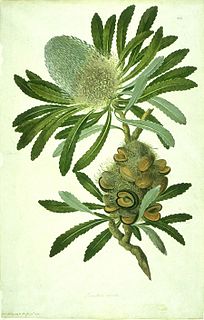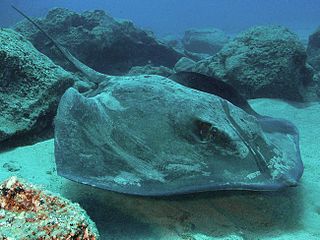Related Research Articles

In music, an arrangement is a musical reconceptualization of a previously composed work. It may differ from the original work by means of reharmonization, melodic paraphrasing, orchestration, or development of the formal structure. Arranging differs from orchestration in that the latter process is limited to the assignment of notes to instruments for performance by an orchestra, concert band, or other musical ensemble. Arranging "involves adding compositional techniques, such as new thematic material for introductions, transitions, or modulations, and endings... Arranging is the art of giving an existing melody musical variety".

A passerine is any bird of the order Passeriformes, which includes more than half of all bird species. Sometimes known as perching birds or songbirds, passerines are distinguished from other orders of birds by the arrangement of their toes, which facilitates perching.

The trogons and quetzals are birds in the order Trogoniformes which contains only one family, the Trogonidae. The family Trogonidae contains 46 species in seven genera. The fossil record of the trogons dates back 49 million years to the Early Eocene. They might constitute a member of the basal radiation of the order Coraciiformes and order Passeriformes or be closely related to mousebirds and owls. The word trogon is Greek for "nibbling" and refers to the fact that these birds gnaw holes in trees to make their nests.

The Japanese spider crab is a species of marine crab that lives in the waters around Japan. It has the largest leg span of any arthropod. They go through three main larval stages along with a prezoeal stage in order to grow to their great size. The genus Macrocheira contains multiple species. Two fossil species of this genus have been found, Macrocheira ginzanensis and Macrocheira yabei, both from the Miocene of Japan. The diverse taxonomic history is an important part of what these creatures are and how they evolved to be what they are today. These creatures are not isolated however, as they are the subject of fishery and are considered a delicacy. Conservation efforts are being put forth to protect these creatures and their population from the dangers of overfishing.

Banksia petiolaris is a rare species of flowering plant of the family Proteaceae native to Western Australia, where it is found in sandy soils in the south coastal regions from Munglinup east to Israelite Bay. It was first described by Victorian state botanist Ferdinand von Mueller in 1864, and no subspecies are recognised. B. petiolaris is one of several closely related species that will all grow as prostrate shrubs, with horizontal stems and thick, leathery upright leaves. Those of this species can be viable for up to 13 years—the longest-lived of any flowering plant recorded. It bears yellow cylindrical flower spikes, known as inflorescences, up to 16 cm high in spring. As the spikes age, they turn grey and develop up to 20 woody seed pods, known as follicles, each.

As with other flowering plants, the taxonomy of Banksia has traditionally been based on anatomical and morphological properties of the Banksia flower, fruiting structure and seed, along with secondary characteristics such as leaf structure and growth habit. Increasingly, molecular evidence from DNA is providing important new insights into relationships within the genus and between this and other genera in the Proteaceae.

Banksia hookeriana, commonly known as Hooker's banksia, is a species of shrub of the genus Banksia in the family Proteaceae. It is native to the southwest of Western Australia and can reach up to 4 m (13 ft) high and 3 m (9.8 ft) wide. This species has long narrow serrated leaves and large, bright flower spikes, initially white before opening to a bright orange that appear over the cooler months. The flowers are pollinated by honeyeaters. The ageing flower spikes develop woody seed pods known as follicles. B. hookeriana is serotinous — large numbers of seeds are stored in the plant canopy for years until the plants are burnt by bushfire.

Passerida is, under the Sibley-Ahlquist taxonomy, one of two parvorders contained within the suborder Passeri. While more recent research suggests that its sister parvorder, Corvida, is not a monophyletic grouping, the Passerida as a distinct clade are widely accepted.

Callitris baileyi is a species of conifer in the family Cupressaceae. It is found only in Australia, more specifically Southeast Queensland. Its common English name is Bailey's cypress-pine. The name is dedicated to Australian botanist Frederick Manson Bailey, who was the first to collect specimens of this tree. Bailey's name is closely associated with much of the flora of Queensland and their elucidation in Southeastern Queensland. Over the past few decades the conifer has been severely threatened by habitat loss Fruiting for the species has been recorded year-round.

The roughtail stingray is a species of stingray in the family Dasyatidae, with separate populations in coastal waters of the northwestern, eastern, and southwestern Atlantic Ocean. This bottom-dwelling species typically inhabits sandy or muddy areas with patches of invertebrate cover, at a depth of 15–50 m (49–164 ft). It is seasonally migratory, overwintering in offshore waters and moving into coastal habitats for summer. The largest whip-tail stingray in the Atlantic, the roughtail stingray grows up to 2.6 m (8.5 ft) across and 360 kg (800 lb) in weight. It is plain in color, with an angular, diamond-shaped pectoral fin disc and a long, whip-like tail bearing a subtle fin fold underneath. The many thorns on its back and tail serve to distinguish it from other stingrays that share its range.

Paraneoptera or Acercaria is a monophyletic superorder of insects which includes four orders, the bark lice, true lice, thrips, and hemipterans, the true bugs.

Ernest Charles Nelson's taxonomic arrangement of Adenanthos was the first modern-day arrangement of that plant genus. First published in his 1978 Brunonia article "A taxonomic revision of the genus Adenanthos (Proteaceae)", it superseded the arrangement of George Bentham, which had stood for over a hundred years. It was updated by Nelson in his 1995 treatment for the Flora of Australia series of monographs.
Anthocephalum philruschi is a species of flatworms. It can be differentiated by its overall size, the number of proglottids and marginal loculi, the number and arrangement of its testes, the size of its apical sucker, the arrangement and distribution of vitelline follicles, and the "muscularity" of its genital pore.
Anthocephalum papefayi is a species of flatworms. It can be differentiated by its overall size, the number of proglottids and marginal loculi, the number and arrangement of its testes, the size of its apical sucker, the arrangement and distribution of vitelline follicles, and the "muscularity" of its genital pore.
Anthocephalum odonnellae is a species of flatworm. It can be differentiated by its overall size, the number of proglottids and marginal loculi, the number and arrangement of its testes, the size of its apical sucker, the arrangement and distribution of vitelline follicles, and the "muscularity" of its genital pore.
Anthocephalum meadowsi is a species of flatworms. It can be differentiated by its overall size, the number of proglottids and marginal loculi, the number and arrangement of its testes, the size of its apical sucker, the arrangement and distribution of vitelline follicles, and the "muscularity" of its genital pore.
Anthocephalum mattisi is a species of flatworms. It can be differentiated by its overall size, the number of proglottids and marginal loculi, the number and arrangement of its testes, the size of its apical sucker, the arrangement and distribution of vitelline follicles, and the "muscularity" of its genital pore.
Anthocephalum healyae is a species of flatworms. It can be differentiated by its overall size, the number of proglottids and marginal loculi, the number and arrangement of its testes, the size of its apical sucker, the arrangement and distribution of vitelline follicles, and the "muscularity" of its genital pore.
Anthocephalum decrisantisorum is a species of flatworms. It can be differentiated by its overall size, the number of proglottids and marginal loculi, the number and arrangement of its testes, the size of its apical sucker, the arrangement and distribution of vitelline follicles, and the "muscularity" of its genital pore.
References
- ↑ Ruhnke, Timothy R., Janine N. Caira, and Allison Cox. "The cestode order Rhinebothriidea no longer family-less: A molecular phylogenetic investigation with erection of two new families and description of eight new species of Anthocephalum." Zootaxa 3904.1 (2015): 051-081.